Figma Sites vs Plasmic side by side comparison
- Authors
- Alex Noel
- Last updated
Recently, Figma introduced Figma Sites — a no-code builder for websites. It’s a clear signal that even the biggest players in design tooling now recognize the massive momentum behind visual and no-code development. This is a win for the entire ecosystem. More attention means more innovation, better tools, and ultimately, smoother workflows for everyone building on the web.
Before we go further, let’s be clear: Figma is an outstanding tool that has transformed how designers and developers collaborate. From real-time editing to reusable components and Dev Mode, it has saved countless hours and brought a level of clarity and speed to product design that few tools ever have.
Old designers yelling at a cloud
Every time a creative tool evolves, there’s a moment of friction. People get used to workflows, build up habits and muscle memory. When something new shows up, even if it’s better, the instinct is often resistance. Not that we haven’t seen that before.

When Figma first came onto the scene, many designers were deeply rooted in Adobe’s suite. The idea of working in the browser, of real-time collaboration, of giving developers a live window into the design file — it all sounded foreign, even unnecessary. Slowly, however, Figma proved itself not just as a viable alternative but also a new standard. The change was inevitable — not because Adobe was bad, but because the future demanded something more open, more collaborative.
Now, Figma finds itself on the other side of that same story.
With Figma Sites, they’re introducing a fundamentally new mode of working: where layout, design, and publishing start to converge inside a single tool. And just like before, there’s pushback. Some designers don’t want to think about flexbox or containers or how a real browser interprets their work. And that’s valid — not every creative needs to shift into building production-ready layouts.
But there’s a bigger shift happening. As more teams embrace tighter collaboration across design and development, these boundaries are getting blurrier by the day. Bridging the gap isn’t about forcing designers to write code — it’s about creating shared systems and shared outputs that move ideas forward faster.
So yes, the change feels strange, as it always does. But if history has taught us anything, it’s that good tools don’t replace people — they help them adapt, communicate, and build better things together.
Let’s examine how the two tools (Plasmic and Figma Sites) differ in approach, philosophy, and features.
Who is it designed for?
Figma Sites is tailored primarily for designers who want to rapidly turn their static layouts into live websites without leaving the Figma environment. It’s perfect for teams that already use Figma daily—marketing teams, product designers, and UX writers—who may have been curious about no-code but hesitant to learn a new platform. By building on familiar UI, Figma Sites lowers the barrier to entry: you don’t need to master a separate builder or deal with unfamiliar panels. It also appeals to freelancers and small agencies looking to prototype landing pages or simple microsites in hours, not days. Ultimately, if you’ve ever wished you could hit “Publish” straight from your design file—and skip hand-offs, exports, and back-and-forths—Figma Sites is built for you.
If you need an end product that fetches data, handles forms, outputs code, supports dynamic routing and state, plugs into React apps without iframes, and uses your own React components—Figma Sites won’t be your ideal candidate. But that’s exactly where Plasmic shines.
Is Figma Sites a competitor to Plasmic? Not really. Plasmic embeds into your React codebase, supports your own components, and scales for enterprise workflows. Figma Sites, by contrast, serves designers who need rapid, no-code static sites. Different problems, different tools—both win by giving teams exactly what they need.
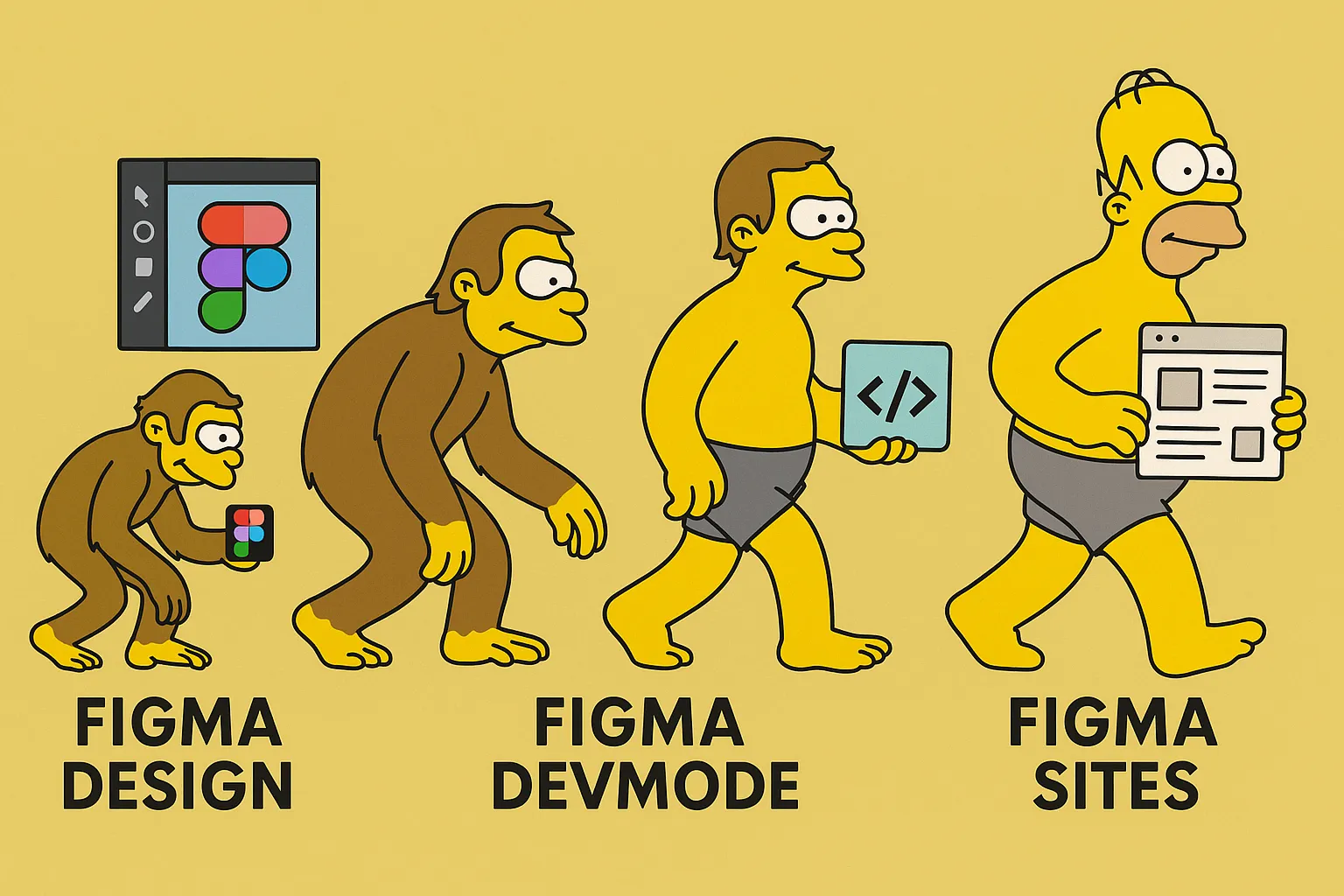
Figma Sites feels like a natural evolution of Dev Mode — another step toward closing the gap between design and development. That’s a challenge we’ve been passionate about at Plasmic too, and seeing more teams try to tackle it is exciting. It validates the direction we’ve been heading in for years: toward a future where developers, designers, and content creators all work side-by-side, without friction.
Feature comparison
Currently Figma Sites is in beta release, and it’s aim for now is to create simple static websites without much logic in it quickly — let’s try to break down the features of Figma Sites, how it is different from Plasmic, and whether it is a good choice for you based on some simple comparisons.
Basic elements
Figma keeps the building experience as close as possible to its main product, so onboarding feels effortless. Here, “basic elements” aren’t HTML buttons, containers, paragraphs, or heading tags—they’re Figma objects and their groupings. For example, to create a row with three emojis, you’d add three text nodes, group them, and then change the layout property of that group:
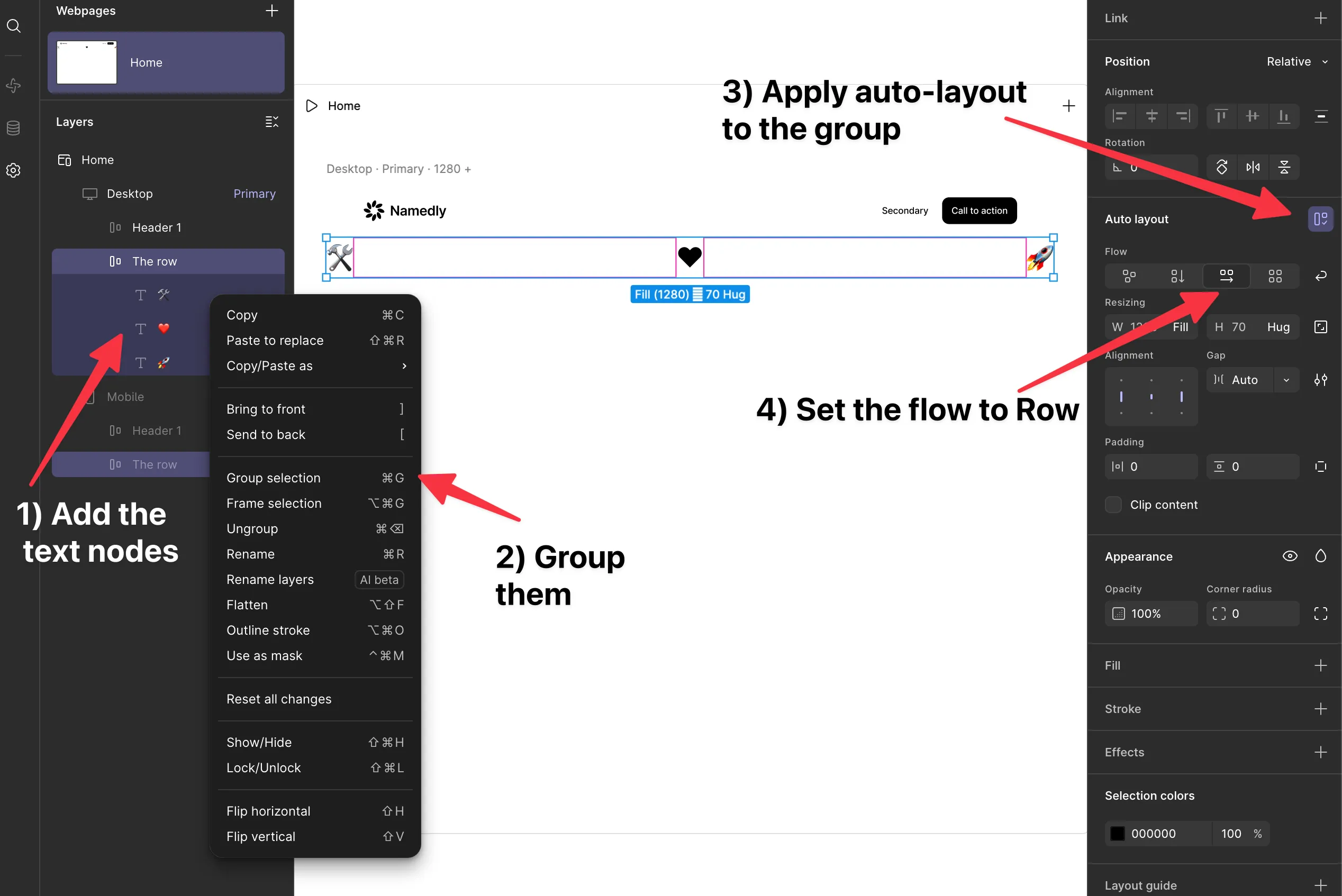
By default, all elements on the canvas are divs. For SEO reasons, you can switch an element’s HTML tag. For example, add a heading above this section and change it to an h1 tag:
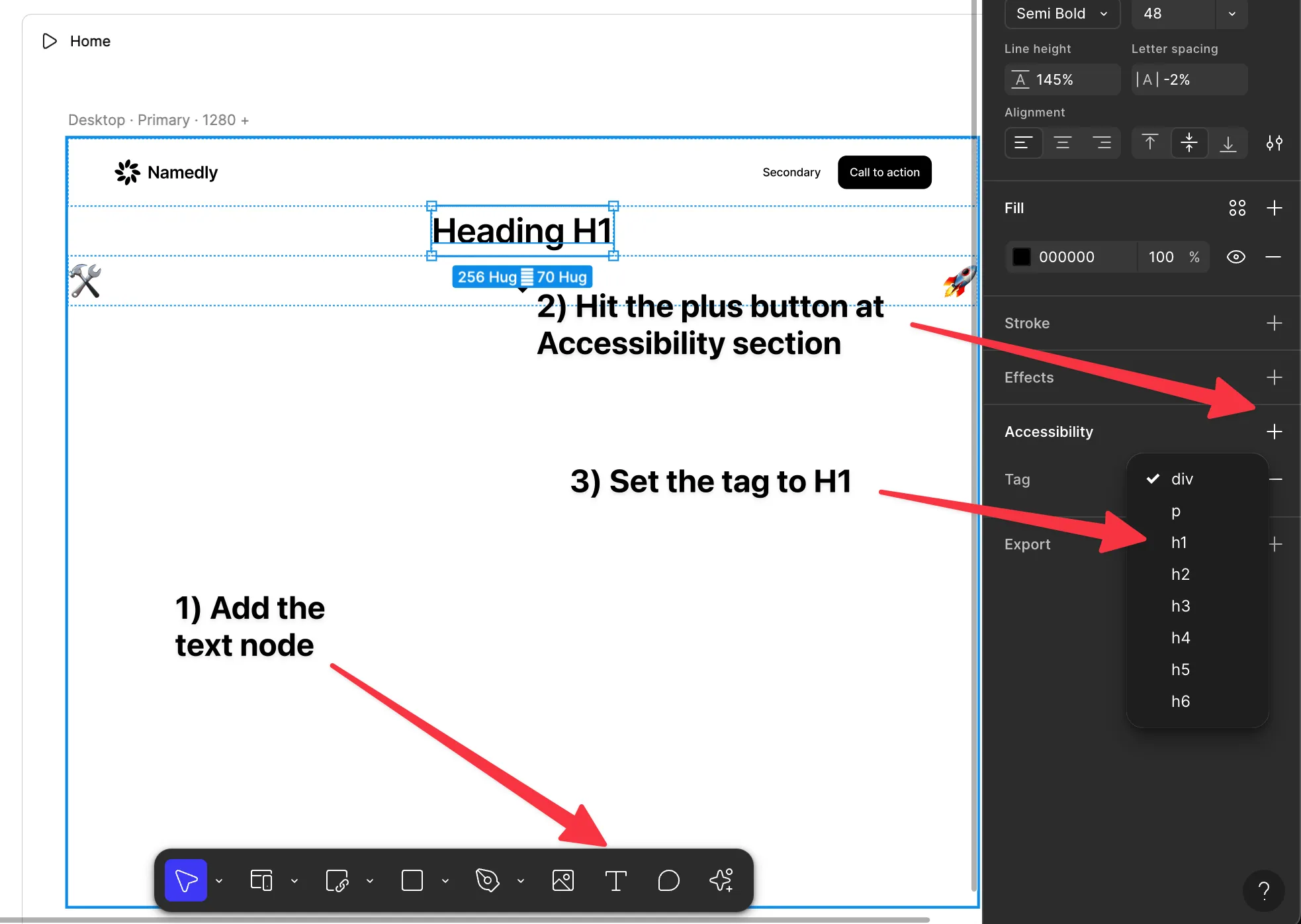
Achieving the same result in Plasmic is similar: instead of groups, you use containers—vertical, horizontal, grid, etc. Use hotkeys or the insertion panel to add elements to the canvas, then group them just as you would in Figma Sites:
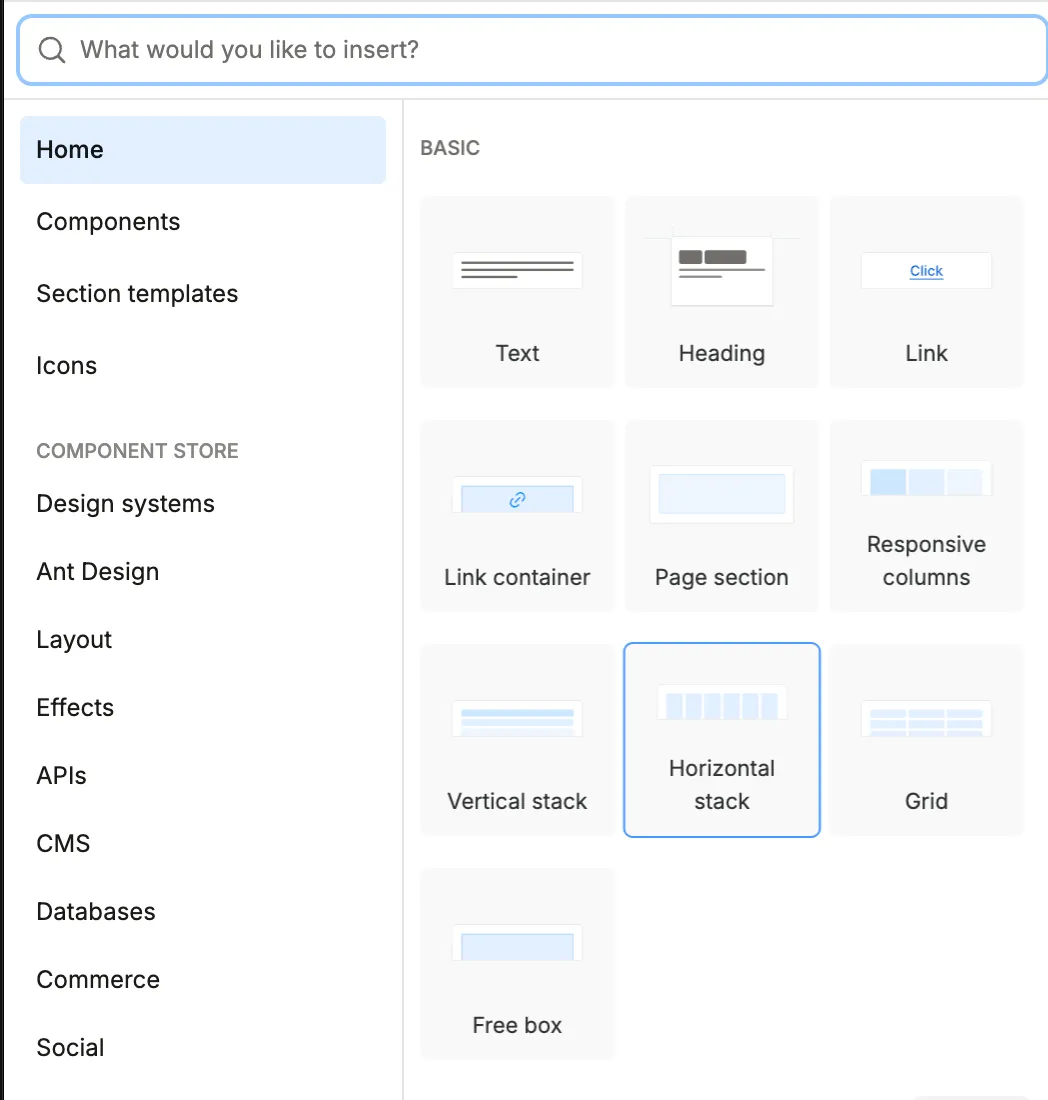
When you have all the elements you need on the canvas, just switch the horizontal distribution in the Layout section to Between or another preferred value:

Images
Adding images is easy in both platforms: simply select the Image element and drag it onto the canvas, or add it via hotkey. Both tools support image libraries and basic filters. For example, in Figma Sites you can add an image and modify its parameters like this:
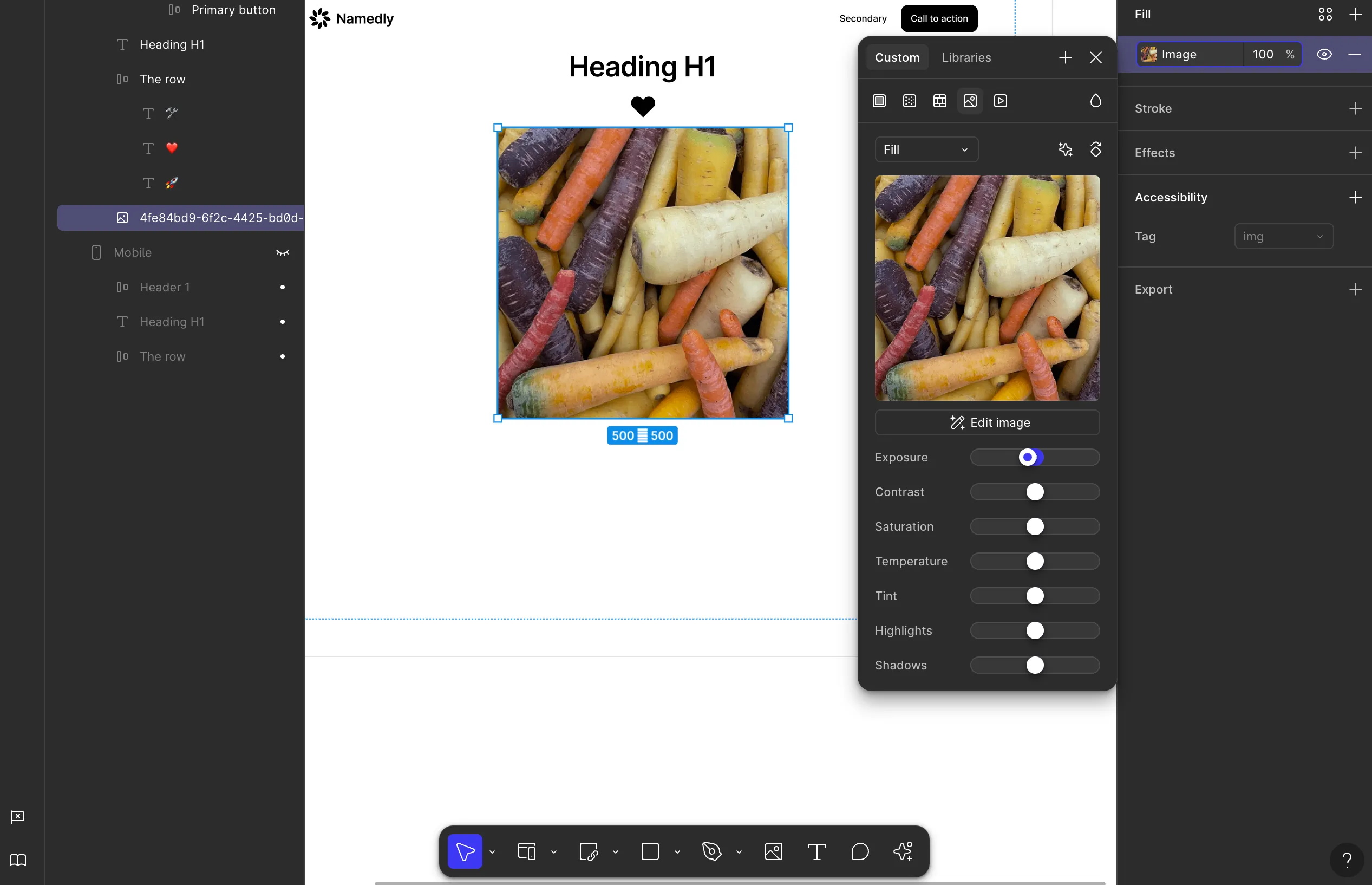
And the same thing in Plasmic Studio:

Plasmic offers some image filters, though not as extensive as Figma’s. You’ll find them in the Design tab under Filter Effects:
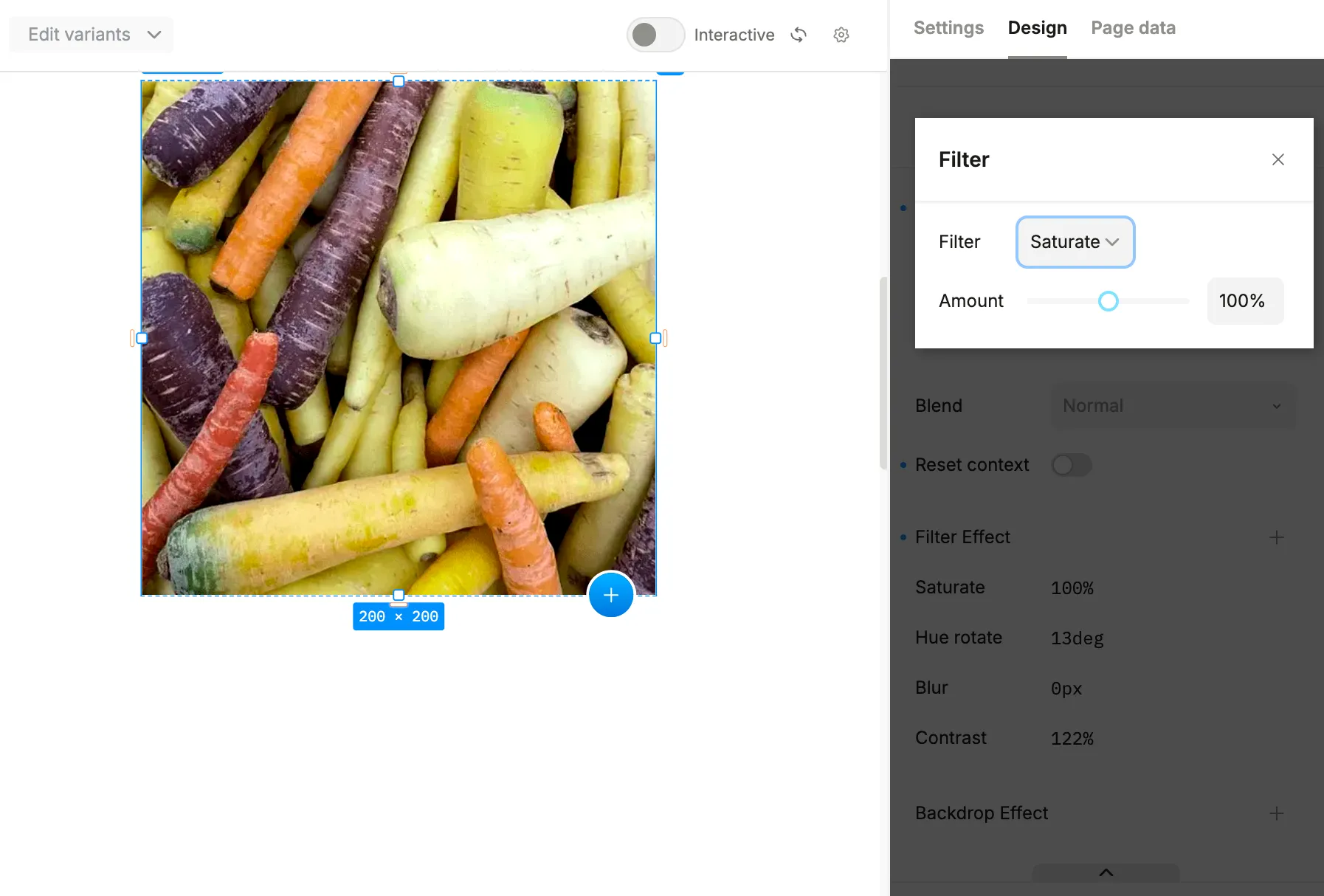
Here are some key differences between how the images function in Plasmic and Figma:
- Figma’s image filtering is very rich, but pages with filtered images can’t be published directly yet—you must export or screenshot the modified image and reimport it.
- Figma includes an embedded AI agent to modify or generate images without leaving the studio.
- Figma supports fill layers, which simplify complex design adjustments.
- Plasmic lets you embed images from your local machine, via URL, or directly from Unsplash.
- Plasmic enables you to set the
altattribute for accessibility and SEO. - Plasmic supports lazy loading for images, improving first-paint performance.
Keyboard shortcuts
The best way to optimize your workflow in any no-code tool is to master keyboard shortcuts. In fact, hotkeys are essential for efficient visual development - they allow you to quickly add elements, adjust properties, and navigate your workspace without constantly reaching for the mouse. This speed boost becomes particularly valuable when building complex layouts.
Both Figma Sites and Plasmic support a wide variety of shortcuts, which you can look up in Plasmic’s lower-left corner:
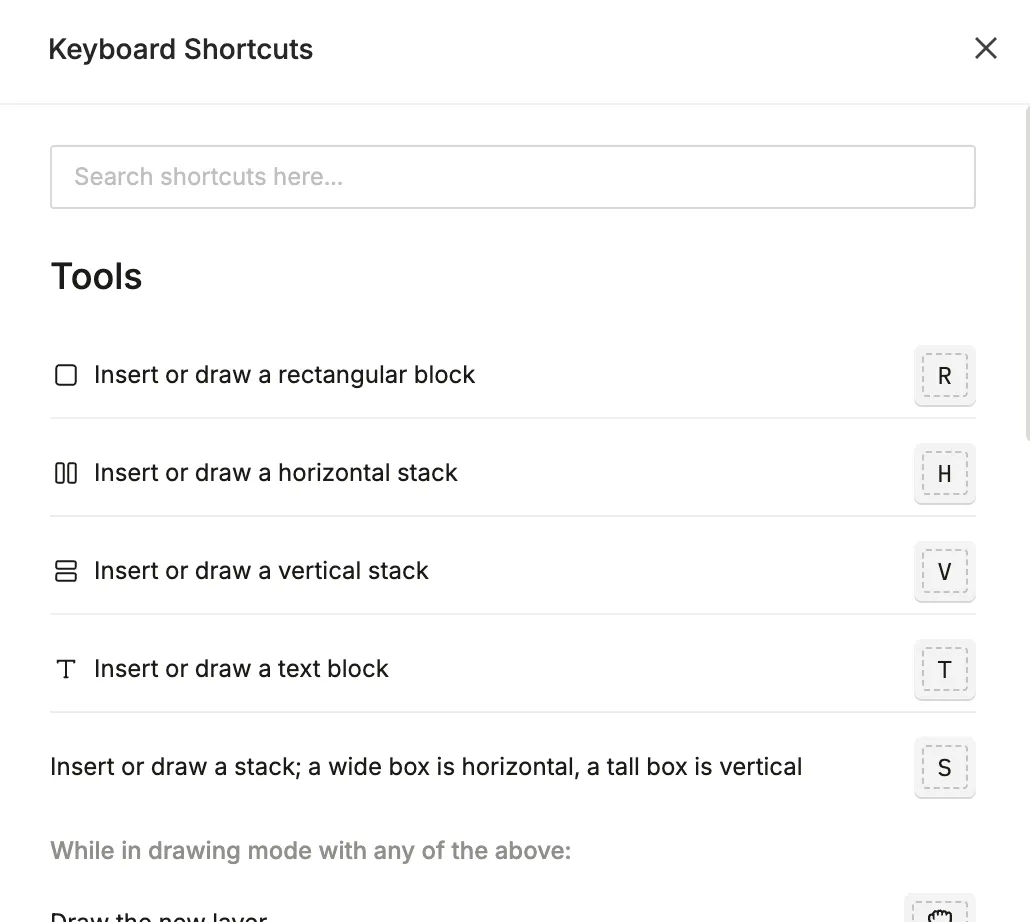
And in the question mark popover on the lower right side in Figma Sites:

Meta tags
Figma Sites supports control over meta tags for each page in the Settings → Webpages:
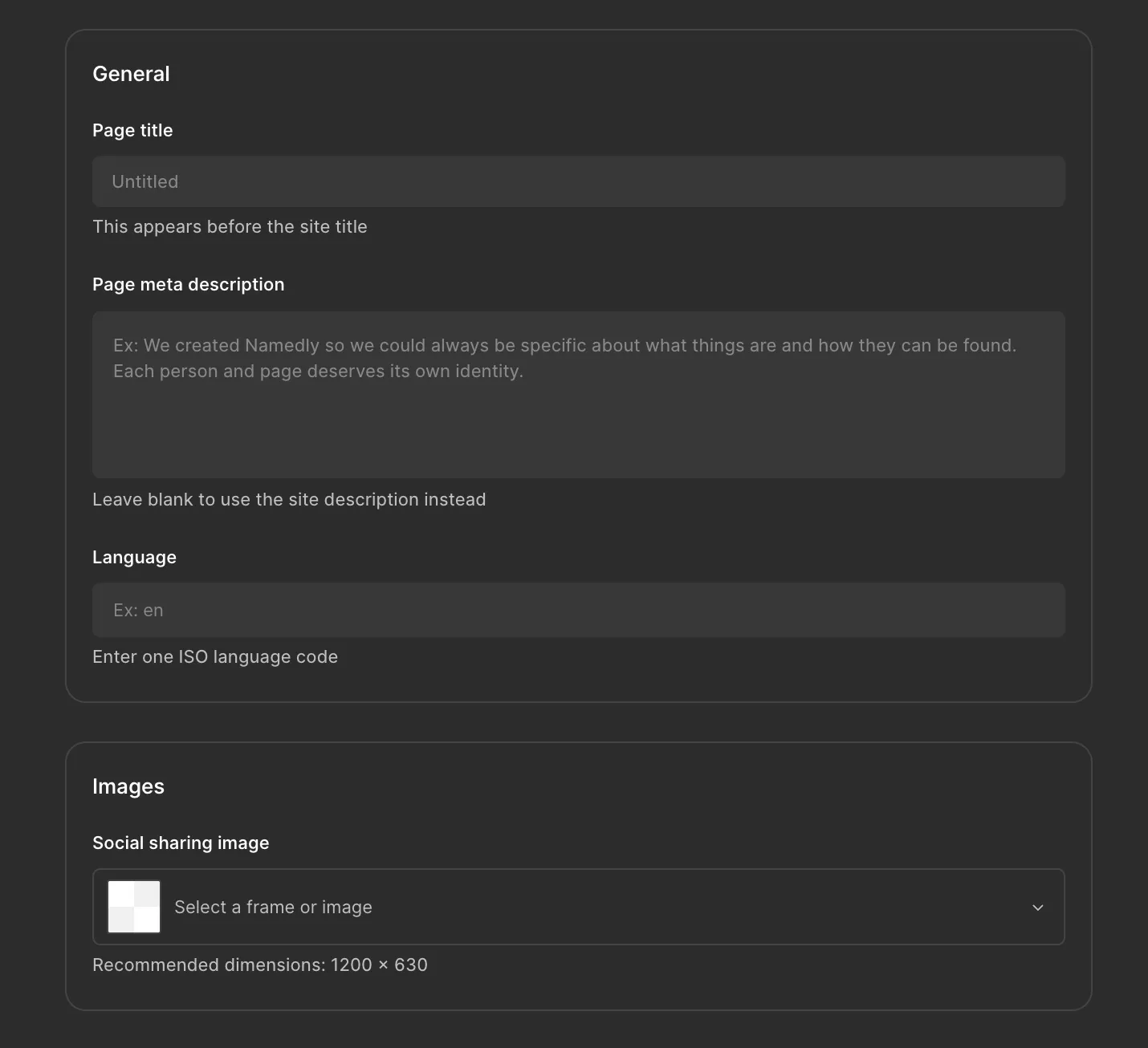
Plasmic supports similar page-level SEO, with additional control over the canonical URL, but lacks the language meta tag setting:
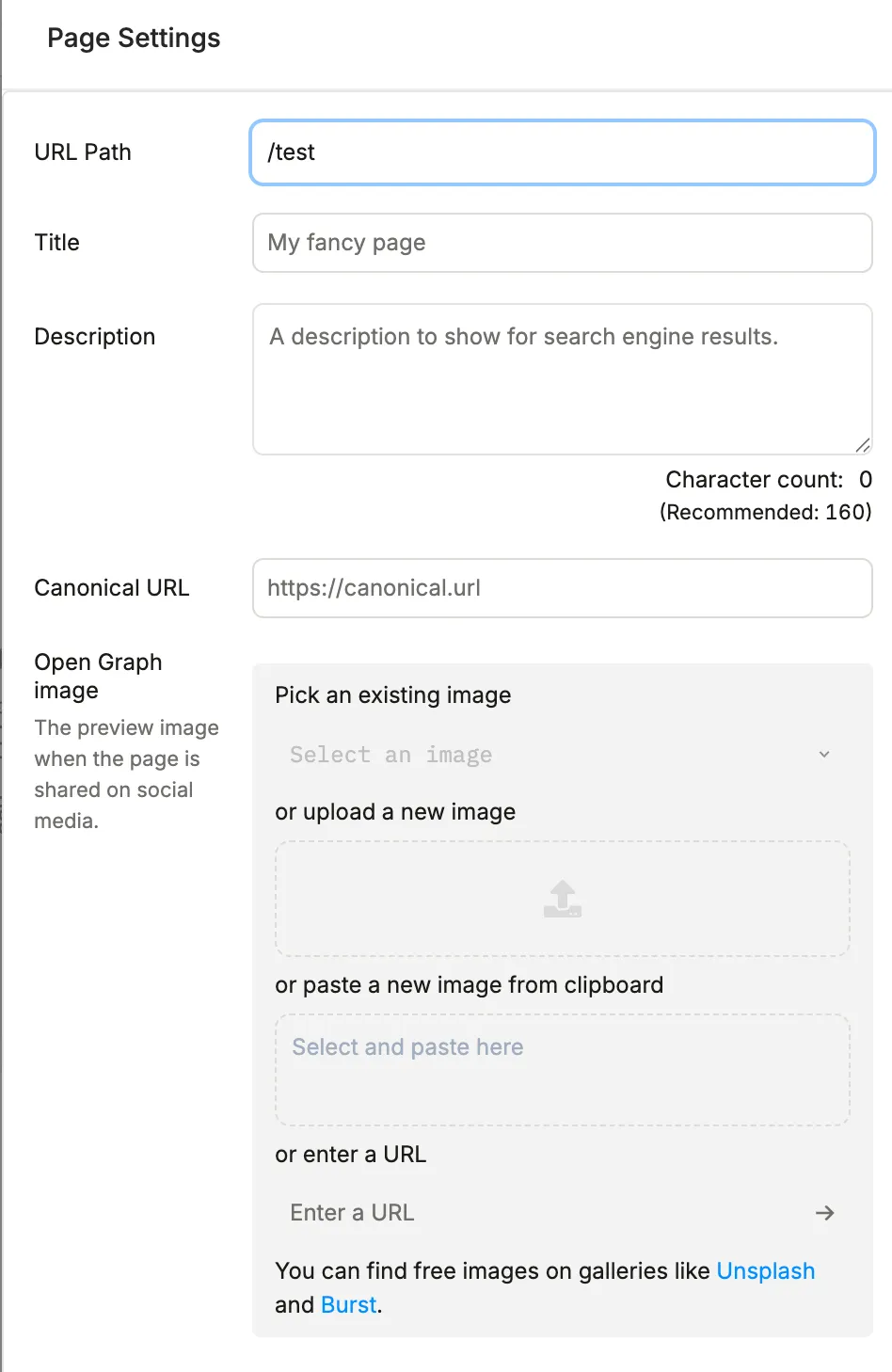
Section templates
Both platforms provide default building blocks and layouts pre-designed for rapid prototyping. Figma stands out of the crowd by giving you access to the Figma Design Library, allowing you to export elements directly onto the canvas. Here’s how the section templates look in Figma:
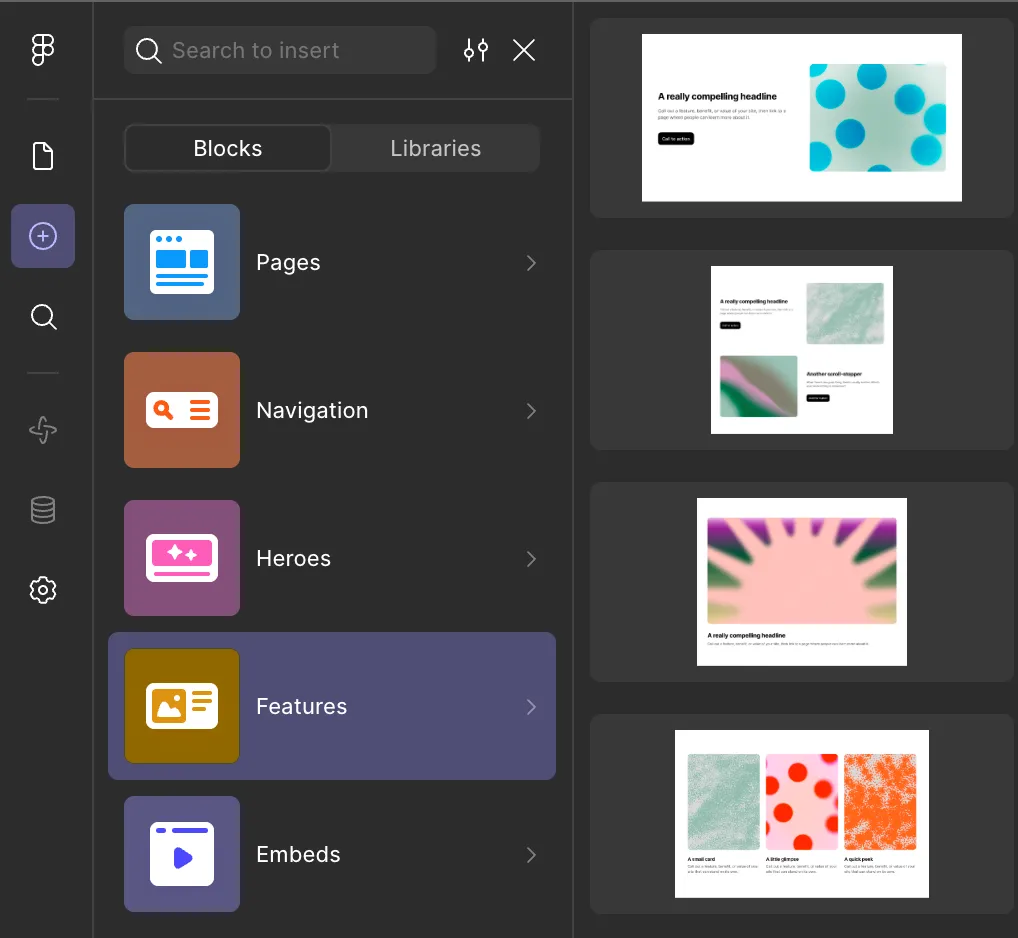
Plasmic supports creating your library of section templates in a way, but it is a bit more cumbersome than Figma’s way of doing things. But even with that said, paired with the component store and a wide range of interactive widgets that you can bring to the canvas, the Plasmic default library will allow you to create extremely eloquent designs without much hassle:

Navigation
Page navigation in both Figma and Plasmic follows a similar flow: you create a page (assigning it a name and URL) and then add a link to it on the canvas. Figma doesn’t have a dedicated link element—instead, you apply a Link interaction to any object. For example, we selected the “Secondary” navbar item and set its click interaction to navigate to another page:
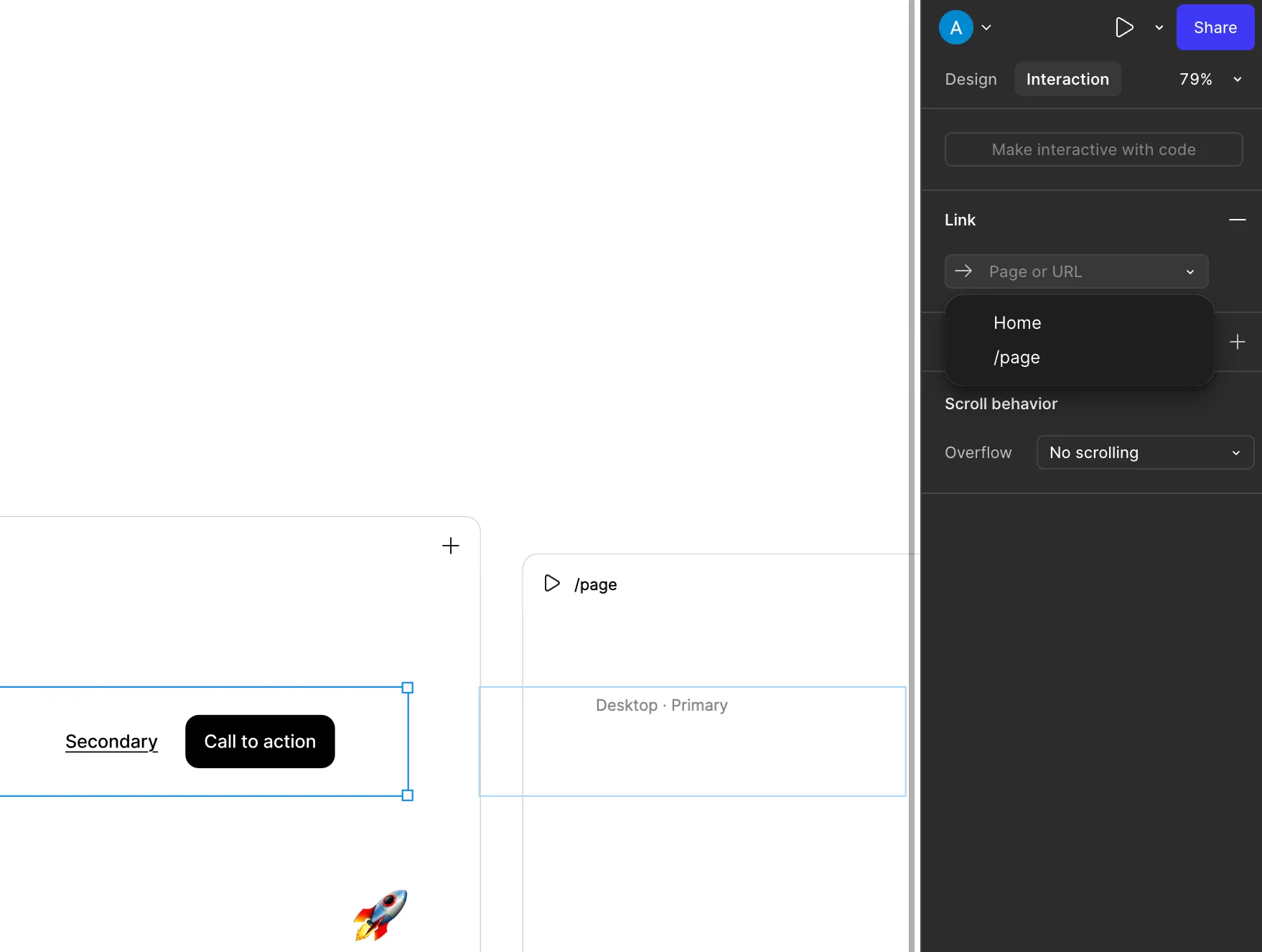
A drawback of Figma Sites is that all pages reside on a single board, which can hurt performance on large projects.
Plasmic, by contrast, creates each page in its own workspace, letting you focus on one page at a time without distraction. Here’s how linking works in Plasmic Studio:
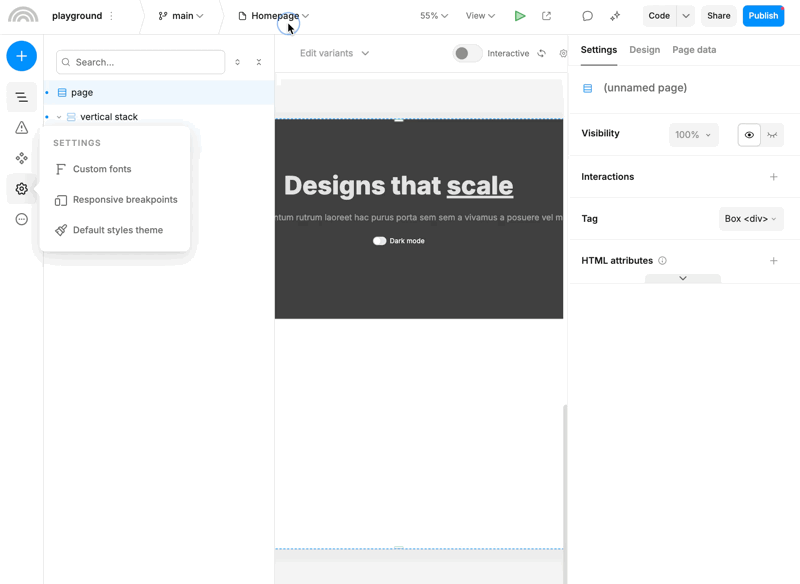
For more complex use cases, Plasmic has dynamic routing functionality, which allows you to build templates for various content within your pages using the URL path params of query params.
Responsive design
The mobile-first approach has been an industry standard for web development for almost a decade, and today it’s expected that a website looks and works great on any screen size.
Both Figma and Plasmic implement this via breakpoints: when the viewport width is at or below a given value, additional styles activate. You can preview these breakpoints in real time—the screen previews are located right to the main canvas to see how your design adapts as you edit.
Publishing
As a last part of the comparison, but not the least, we will examine the publishing functionality. Both platforms allow you to see a history of your versions, with a slight difference: in Figma, you are not able to preview the published version; you’d have to deploy it to your production first.
Below you can compare how the UI looks for the version history:
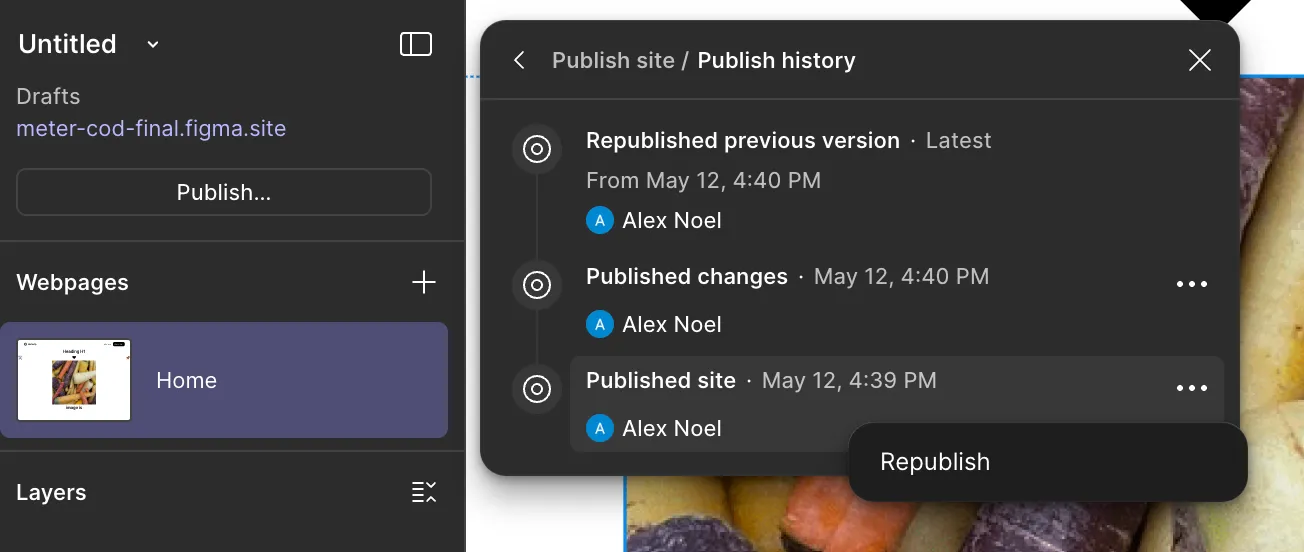
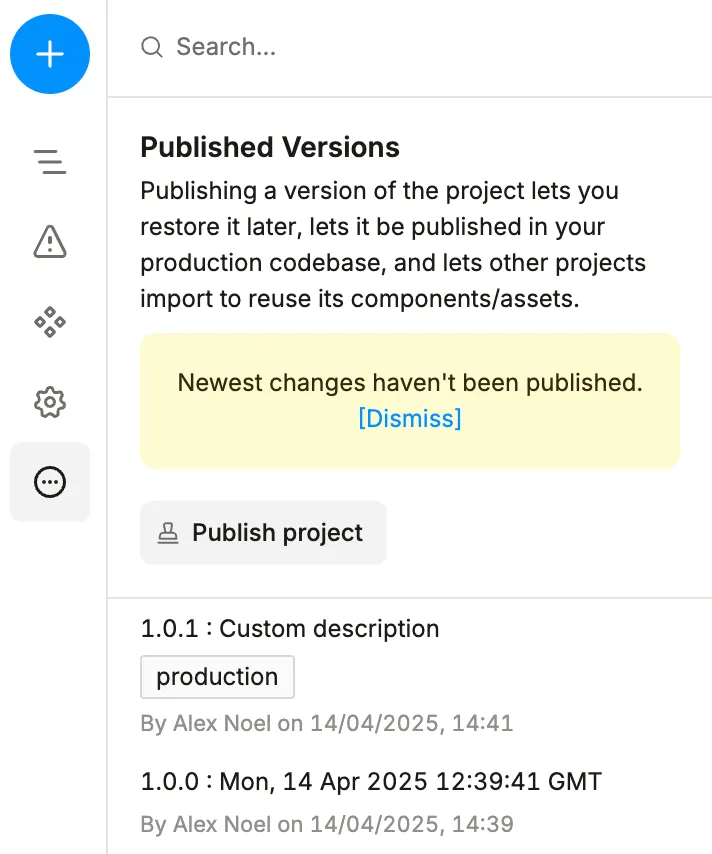
The publishing process is straightforward: choose a domain (or accept a generated one) and deploy. Plasmic also lets you create a Git repo or trigger a webhook during publishing, so you can deploy to any third-party hosting provider instead of being locked into our built-in hosting.
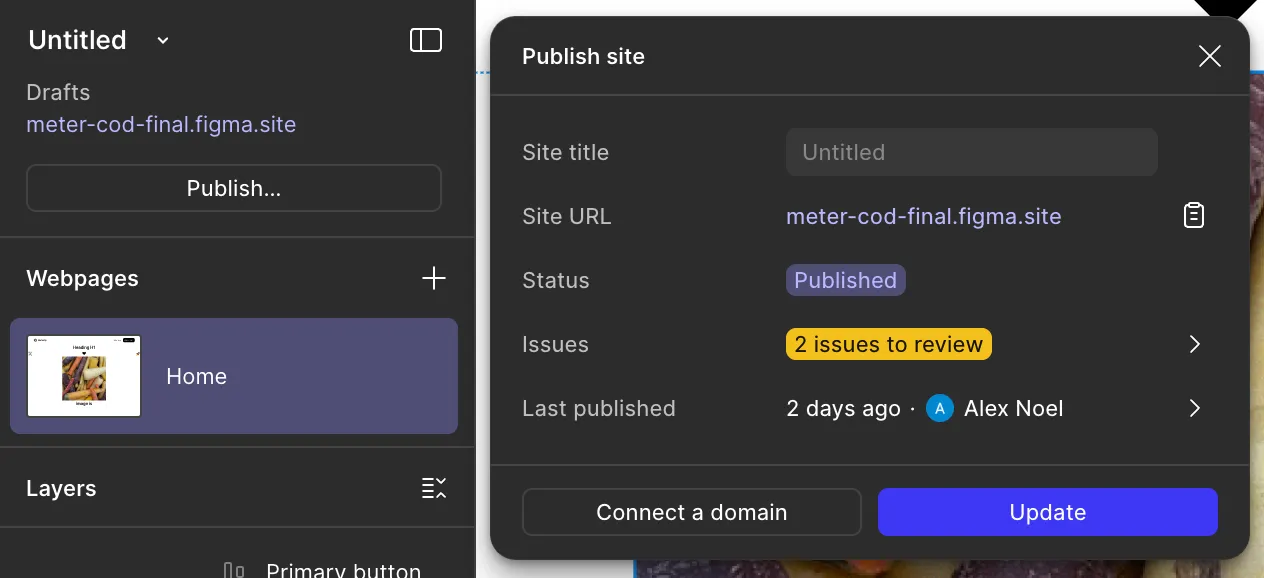
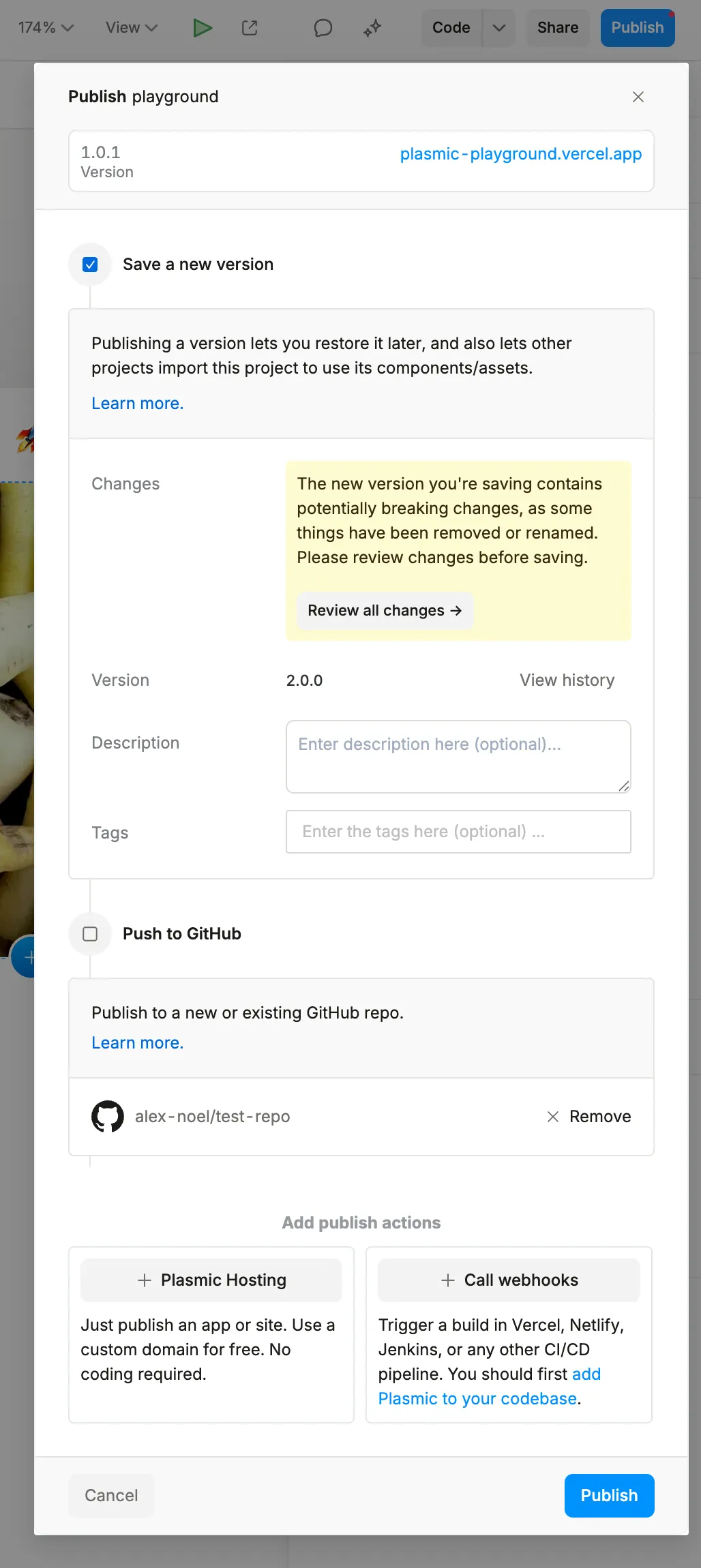
Conclusion
If you’re a designer already fluent in Figma—comfortable with its artboards, components and collaborative workflows—and your primary goal is to spin up a beautiful, static site in hours rather than days, Figma Sites will feel like a natural extension of your toolbox. You’ll stay in the environment you know, hit “Publish” straight from your design file, and skip the typical hand-off friction.
If you need rich interactivity and enterprise-grade robustness—things like data fetching, dynamic routing, form logic, state management, seamless integration into existing React apps without resorting to iframes, and the ability to use your own custom React components—Plasmic is built for exactly that. It gives you the power of React under the hood plus a visual studio that plugs directly into your codebase, so your designers, content creators, and developers all work in sync.
Both tools excel in their lanes. Choose Figma Sites for rapid, no-code static sites where designer speed is paramount. Choose Plasmic when you need a different level of visual development experience: the complexity and extensibility of a production-ready platform with battle-tested React integration.
Follow @plasmicapp on Twitter for the latest updates.